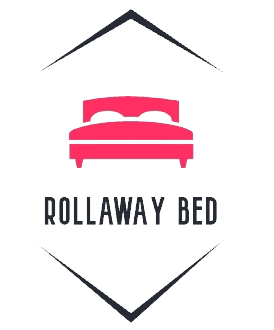Table of Contents
Bunk Bed Mattresses: A Necessity for a Safe and Comfortable Sleep
Bunk beds, a staple in many children’s bedrooms, offer a space-saving solution while providing a fun and adventurous sleeping arrangement. However, when it comes to bunk beds, choosing the right mattress is crucial for ensuring both safety and comfort for your child. A well-selected mattress can make the difference between a restful night’s sleep and a night of tossing and turning.
Standard bunk bed mattresses come in three sizes: twin, full, and twin XL. Twin mattresses are the most common choice, measuring 39 inches wide and 75 inches long. Full mattresses, measuring 54 inches wide and 75 inches long, provide more sleeping space but may not fit all bunk bed frames. Twin XL mattresses, measuring 39 inches wide and 80 inches long, offer an extra five inches of length for taller children.
Innerspring mattresses, the most traditional type, feature a coil system that provides support and bounce. Memory foam mattresses, on the other hand, conform to the body’s shape, offering pressure relief and support for different sleeping positions. Hybrid mattresses combine the features of innerspring and memory foam, providing both support and pressure relief.
Safety Considerations for Bunk Bed Mattresses
When choosing a bunk bed mattress, safety should be your top priority. A mattress that is too thick or too thin can pose a safety hazard. A mattress that is too thick can leave a gap between the top of the mattress and the guardrails, increasing the risk of falls. On the other hand, a mattress that is too thin may not provide adequate support for the guardrails, causing them to become loose or unstable.
To ensure safety, it is important to follow the manufacturer’s guidelines for mattress thickness. The manufacturer will specify the maximum thickness of the mattress that can be used on the top bunk. It is also important to make sure that the mattress fits snugly inside the bed frame, with no gaps around the edges.
Here are some additional safety tips for bunk bed mattresses:
- Avoid using pillows or blankets on the top bunk, as they can increase the risk of falls.
- Make sure the ladder is securely attached to the bed frame and is easy to climb.
- Teach children to use the ladder safely and to always hold on with both hands.
- Never allow more than one child to sleep on the top bunk at a time.
- Supervise young children when they are using the bunk bed.
By following these safety tips, you can help to prevent accidents and ensure that your child has a safe and comfortable sleep experience on their bunk bed.
Comfort and Support for a Restful Night’s Sleep
A good bunk bed mattress should not only be safe but also provide adequate comfort and support for a growing child’s body. The right mattress can contribute to a restful night’s sleep, allowing children to wake up feeling refreshed and energized.
Mattress firmness is an important factor to consider when choosing a bunk bed mattress. A mattress that is too firm can be uncomfortable and cause pressure points, while a mattress that is too soft may not provide enough support. Medium-firm mattresses are often a good choice for bunk beds, as they offer a balance of comfort and support.
Mattress density, which refers to the amount of material used in the mattress, also plays a role in comfort and support. A denser mattress will generally be more supportive and durable than a less dense mattress.
In addition to firmness and density, other factors that can affect comfort include the type of mattress (innerspring, memory foam, or hybrid) and the sleeper’s individual preferences. Some children may prefer the bounce of an innerspring mattress, while others may prefer the pressure relief of a memory foam mattress.
Here are some additional tips for choosing a bunk bed mattress for comfort and support:
- Consider your child’s sleeping position. Side sleepers may prefer a softer mattress, while back sleepers may prefer a firmer mattress.
- Ask your child to try out different mattresses to see which one they find most comfortable.
- Make sure the mattress fits snugly inside the bed frame to prevent sagging and discomfort.
By considering these factors, you can choose a bunk bed mattress that will provide your child with the comfort and support they need for a good night’s sleep.
Durability and Maintenance for a Long-Lasting Mattress
Bunk bed mattresses experience regular use and wear and tear, making it essential to choose a durable mattress that can withstand the rigors of everyday life. Durability is particularly important for bunk beds, as the top bunk may be subjected to more frequent climbing and jumping.
Several factors contribute to a bunk bed mattress’s durability:
- Quality Construction: Look for mattresses with reinforced edges, sturdy stitching, and a high-quality cover.
- Durable Materials:Choose mattresses made with high-density foam, innerspring coils that are individually wrapped, and durable covers that can resist stains and tears.
- Mattress Protector: Invest in a waterproof mattress protector to shield the mattress from spills and accidents.
Regular maintenance can also extend the lifespan of a bunk bed mattress:
- Rotate the Mattress: Flip or rotate the mattress every 6-12 months to prevent uneven wear and tear.
- Air Out the Mattress: Regularly expose the mattress to fresh air to prevent moisture buildup and promote breathability.
- Spot Clean Stains: Promptly address spills and stains to prevent them from setting in and damaging the mattress.
- Avoid Jumping: discourage children from jumping on the mattress, as this can put excessive strain on the structure and shorten its lifespan.
By choosing a durable mattress and following proper maintenance practices, you can ensure that your child’s bunk bed mattress provides a safe and comfortable sleep environment for years to come.
Additional Factors to Consider
When choosing a bunk bed mattress, it’s important to consider various factors beyond safety, comfort, and durability to make an informed decision that aligns with your needs and preferences.
Budget:
Bunk bed mattresses come in a wide range of prices, from budget-friendly options to high-end luxury models. Set a realistic budget and consider the features and quality that align with your spending capacity.
Environmental Factors:
If you prioritize eco-friendly choices, consider mattresses made with sustainable materials and eco-conscious manufacturing processes. Look for certifications like GREENGUARD Gold or CertiPUR-US, which indicate low emissions and reduced environmental impact.
Customer Reviews:
Research and read customer reviews to gain insights into the real-world experiences and opinions of other users. Pay attention to consistent patterns in feedback, particularly regarding comfort, durability, and any potential issues.
Comparison Shopping:
Don’t limit yourself to a single brand or retailer. Compare different mattresses across various sources, considering factors like price, features, customer reviews, and warranty terms.
Trial Periods:
Many online mattress retailers offer trial periods, allowing you to test out the mattress in your child’s bedroom before committing to a purchase. Utilize these trial periods to ensure the mattress meets your expectations.
Seek Expert Advice:
If you have specific concerns or questions regarding your child’s sleep needs or mattress recommendations, consider consulting with a sleep specialist or pediatric orthopedic specialist.
Remember, choosing the right bunk bed mattress is an investment in your child’s sleep quality and overall well-being. By carefully considering these additional factors, you can make a well-informed decision that ensures a safe, comfortable, and long-lasting sleep experience for your child.
Conclusion – Choosing the Perfect Bunk Bed Mattress for Your Child
A bunk bed mattress is an essential component of a child’s bunk bed setup, influencing both safety and comfort. By considering the factors discussed in this guide, you can make an informed decision that ensures your child has a safe, comfortable, and supportive sleep environment.
Here’s a recap of key points to remember:
- Safety First: Prioritize safety by choosing a mattress that meets safety standards and fits snugly within the bed frame.
- Comfort and Support: Consider your child’s sleeping position, preferences, and individual needs when selecting a mattress firmness and density.
- Durability and Maintenance: Invest in a durable mattress with reinforced edges, sturdy stitching, and a high-quality cover. Regular rotation, airing, and spot cleaning can extend its lifespan.
- Additional Considerations: Factor in budget, environmental concerns, customer reviews, comparison shopping, trial periods, and expert advice for a comprehensive decision-making process.
Remember, the right bunk bed mattress can make a significant difference in your child’s sleep quality, contributing to their physical and mental well-being. Take the time to research, compare, and consider your child’s unique needs to make an informed choice that ensures a safe and restful night’s sleep for years to come.
please visit bed and mattress for more information.


I truly enjoy reading through on this website , it has got excellent blog posts.